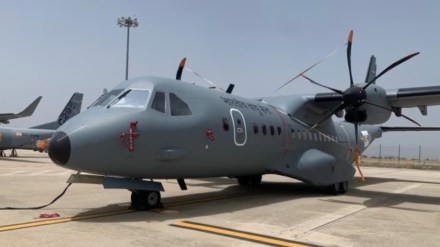The Indian Ministry of Defence is expected to issue a Request for Proposal (RFP) soon for the acquisition of 15 Airbus C-295 aircraft in maritime variants, aimed at enhancing the Indian Navy’s and Coast Guard’s operational capabilities. This decision comes after the Defence Acquisition Council (DAC) approved the Acceptance of Necessity (AoN) earlier this year. Under this approval, the Navy will receive nine C-295 aircraft for medium-range maritime reconnaissance (MRMR), while the Coast Guard will acquire six C-295 multi-mission maritime aircraft (MMMA).
Strengthening Maritime Surveillance Capabilities
The C-295 aircraft are poised to fill a critical gap in India’s maritime surveillance capabilities. Currently, the Indian Navy relies heavily on Boeing P-8I aircraft for long-range maritime reconnaissance (LRMR) and Dornier DO-228 aircraft for short-range patrols. However, there is a pressing need for an intermediate, medium-range aircraft that can efficiently bridge the gap between these existing platforms. The C-295 is designed to fulfill this requirement, offering enhanced surveillance, reconnaissance, and strike capabilities.
Equipped with advanced sonobuoys for anti-submarine warfare, lightweight torpedoes (TAL), and potential for anti-ship missiles (NASM-SR and NASM-MR), the C-295 will be a versatile platform for the Indian Navy. Its extended mission capabilities will significantly bolster India’s ability to monitor vast maritime areas, especially those beyond the Exclusive Economic Zone (EEZ) and along key Sea Lines of Communication (SLOC) in the Indian Ocean Region (IOR).
The Role of the C-295 in the Indian Navy’s Fleet
The induction of the Airbus C-295 will complement the Navy’s existing assets, offering a medium-range solution to support maritime domain awareness and enhance operational readiness. Unlike the P-8I, which is designed for long-range missions, the C-295 is intended for medium-range operations, which makes it a crucial asset for daily maritime surveillance. These aircraft will be armed with weaponry tailored to combat both surface and subsurface threats, making them effective in both anti-submarine and anti-surface warfare missions.
“The C-295 will not only enhance our maritime domain awareness but also optimize the operational use of our long-range assets,” said Captain DK Sharma, former spokesperson for the Indian Navy. The new aircraft will conserve engine hours of the P-8Is and allow for more efficient use of resources across a broader range of missions.
The Strategic Importance for the Indian Navy
With India’s maritime interests spanning across the Arabian Sea and Bay of Bengal, the need for a sustained reconnaissance presence is crucial. The C-295 aircraft will provide real-time intelligence and targeting data, playing a key role in monitoring and securing the Indian Navy’s areas of interest. These include important chokepoints and strategic routes in the Indian Ocean Region, vital for India’s defense and economic security.
The deployment of the C-295 will also significantly contribute to India’s efforts to enhance maritime security in the region, acting as a force multiplier in terms of surveillance coverage. Its enhanced weaponry and multi-role capabilities make it a flexible solution, capable of adapting to a wide variety of operational demands.
Comparing the C-295 with the P-8I
While both the P-8I and the C-295 serve critical roles in the Navy’s reconnaissance and surveillance missions, they are designed for different operational needs. The P-8I, a long-range anti-submarine warfare aircraft, is primarily used for missions that require extended reach and high endurance. In contrast, the C-295 will be a medium-range platform, designed to provide more frequent and flexible patrols closer to India’s maritime borders, particularly along the Sea Lines of Communication.
In essence, the C-295 will complement the P-8I by filling the medium-range gap and allowing for more strategic, sustained surveillance over critical regions such as the Exclusive Economic Zone and vital maritime chokepoints. Together, these platforms will form a comprehensive and formidable maritime surveillance network for India.
Bottomline
The forthcoming RFP for the C-295 aircraft is a significant step in enhancing India’s maritime security capabilities. With its advanced surveillance and weapon systems, the C-295 is poised to strengthen the Indian Navy’s and Coast Guard’s ability to monitor, patrol, and defend vast stretches of India’s maritime domain. This acquisition will not only fill the operational gap between short-range and long-range surveillance platforms but also provide India with a more robust, multi-mission solution to safeguard its strategic maritime interests in the Indian Ocean Region.
